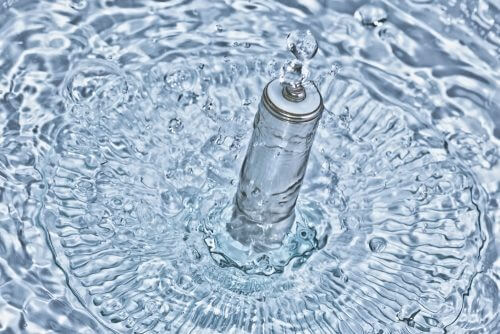Researchers have succeeded in producing electrically charged water using a floating water bridge

[Translation by Dr. Nachmani Moshe]
Until its rediscovery at the Graz University of Technology in 2007, the phenomenon of a "water bridge" that was discovered back in the 19th century was submerged in the abyss of femininity. If ultra-purified water, i.e. that which has been distilled many times, is between two glasses and is exposed to high voltage, the liquid will move up to the rim of each of the glasses creating a floating bridge of water between the two glasses. The water that makes up this bridge flows in both directions and constitutes a completely new situation with special properties of density and structure. A research group from the Netherlands has now been able to demonstrate how this floating water bridge produces electrically charged water that retains its charge for some time.
The water is not electrically charged (due to the electrons), but it is more correct to say that it is protonically charged (due to the protons). This new type of water is positively or negatively charged depending on the number of protons. The study showed that in anodic water (positively charged water) the protons are created during electrolysis. These hydrogen nuclei flow through the water bridge into the cathode water (negatively charged water) in the second glass, where they are neutralized by hydroxyl ions. In view of the fact that the protons move at a finite speed, there is always an excess of protons in one of the cups compared to the other cup. If the water bridge is suddenly cut off, the proton charges remain. The present study showed that this charge remained stable for a full week.
The understanding that such water bridges could be used as electrochemical or biochemical systems gives rise to a variety of possibilities for industrial applications: it will be possible to bring different materials into contact with the water bridge in order to initiate chemical reactions; The water could become a "water battery" as a storage medium for electric charge; And it will be possible to produce acids and bases without the need for counterions. These applications could contribute to the development of environmentally friendly cleaning materials, to the reduction of waste resulting from chemical processes and even to medical applications.
![The water bridge shown in the picture is formed after exposure to a high electric voltage of 15kV. The length of the bridge between the two glasses is about XNUMX cm, with each one filled with ion-free water. [Courtesy: © Woisetschläger/Fuchs - TU Graz]](https://www.hayadan.org.il/images/content3/2016/03/8513f177fa1-500x250.jpg)

6 תגובות
The charges are electrostatic charges so the stored energy is negligible, like in a capacitor
15kV... why is there no electrolysis of the water? And why do ions in water destroy this effect?
Besides, protons hardly move in an aqueous medium under the influence of external stress due to the enormous charge density on them which causes a huge solvation layer around them; They have a completely different charge transfer mechanism, which for laymen can be said to be like a "leap" of the positive charge within a given reservoir and at the edge of the reservoir there is a transfer of charge to neighboring reservoirs as well.
To Yossi and Herzl, why not think about storing energy in relatively large quantities
In a relatively cheap battery from green energy systems?
With a little improvement and maybe even without it, there is apparently potential here to help one of the problems
The foundation of the non-polluting energy economy.
Herzl How sad that this is true.
They will also say that even water has a memory.
Beautiful. The reported method is not economically viable for energy production. That is, you don't invest less than you get. 15KV to produce this energy. Distilling water is energy. Maybe as cleaning agents.
An opportunity for some charlatans to produce new drugs that cure the general.